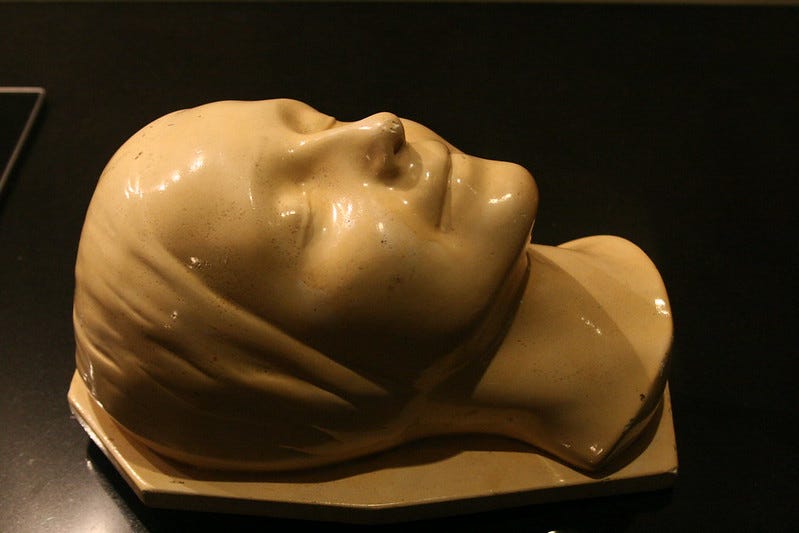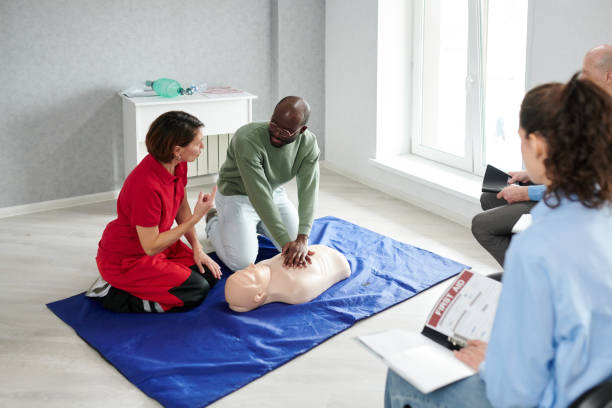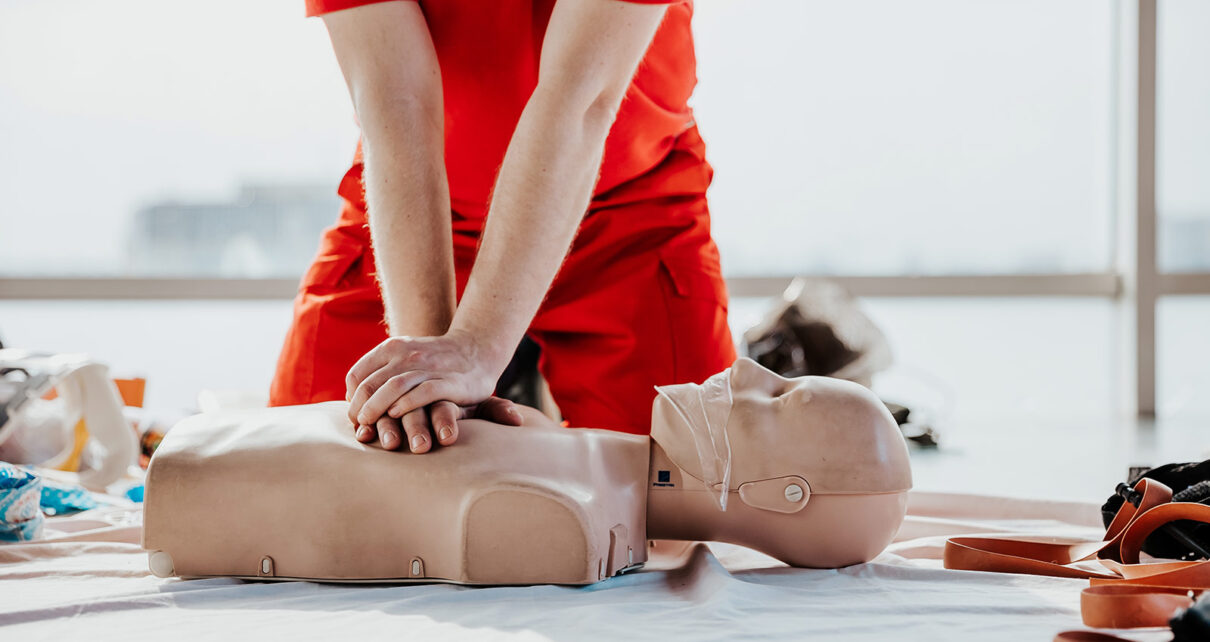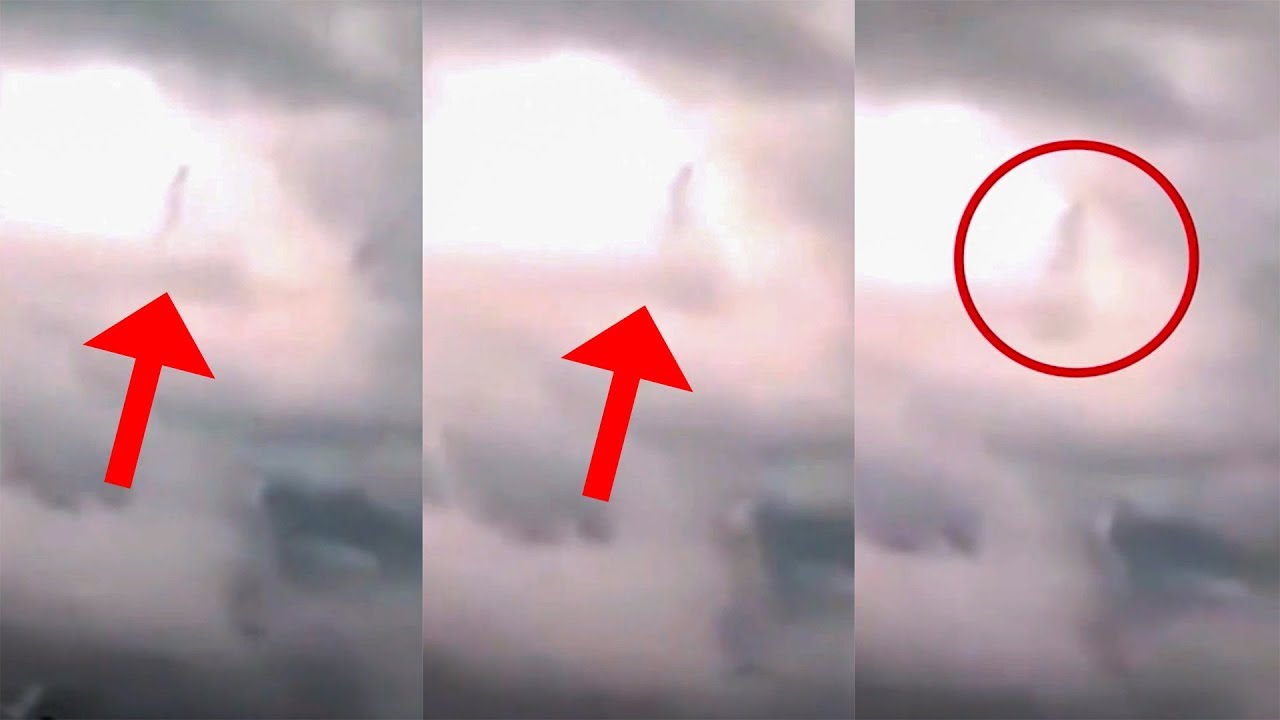In the realm of emergency medical training, one face stands out as a poignant symbol of life-saving techniques: that of Resusci Anne, the CPR training mannequin. Labeled as the “Most Kissed Girl In The World,” Resusci Anne’s tranquil countenance is based on the death mask of an unidentified young woman from the 19th century, often referred to as L’Inconnue de la Seine. This mask, displaying a serene expression, has become an enduring enigma in both the artistic and medical communities.
The mystery begins with the discovery of the woman’s body in the Seine River in Paris. Believed to have drowned in the 1880s, her identity was never established, but her death mask reportedly became a popular fixture in Parisian homes, admired for its haunting beauty. The story took a practical turn in the 1950s when a Norwegian toy manufacturer, Asmund Laerdal, created the first CPR training dummy. Laerdal chose the unknown woman’s peaceful visage for the face of the mannequin, aiming to provide a human connection during the crucial training that could mean the difference between life and death.
Laerdal’s choice immortalized the enigmatic lady as an iconic figure in life-saving efforts worldwide. The face of Resusci Anne continues to oversee the training of countless individuals in CPR, bridging the gap between a historic mystery and a modern educational tool. Although rooted in tragedy, her story has been transformed over time into a legacy that continues to inspire and teach vital skills that save lives.
The Origins of ‘The Most Kissed Girl In The World’
In the late 19th century, Paris was shaken by the story of an unidentified young woman who was found drowned in the River Seine. With no known identity, she was simply referred to as L’Inconnue de la Seine or the unknown woman of the Seine. The serenity of her expression in death captivated the public, leading to the creation of a death mask — a plaster cast made of a person’s face after they have passed away.
The story tells that the pathologist at the morgue was so taken by her beauty that he commissioned the death mask. This mask supposedly became a fixture in French homes as a poignant symbol of tragic beauty. It inspired numerous literary works and artistic endeavors, feeding into the lore surrounding the enigmatic figure.
Her visage took on a new life when, in the 1950s, it served as the inspiration for the face of Resusci Anne, the CPR training mannequin. Norwegian toy maker Åsmund Laerdal chose the mask as the model for the mannequin’s face. His rationale was that a beautiful and delicate visage would likely engender a connection that could compel users to learn CPR.
The face of L’Inconnue became coined as ‘the most kissed face’ in history, as millions of first aid trainees have practiced lifesaving techniques on Resusci Anne. Through the confluence of anonymity, beauty, and practicality, the unidentified woman’s face became an icon in medical training—and her legacy lives on in life-saving education across the globe.

The Story of the Drowned Teen
In the 19th century, the Seine River in Paris became the resting place for an unidentified young woman, now referred to as L’Inconnue de la Seine. This young woman believed to be around 16 years of age at the time of her death, was found drowned in the Seine.
Her body showed no signs of violence, leading many to speculate that her death was a suicide. However, her true identity and the circumstances of her death have never been confirmed, shrouded in mystery and maintaining her title as The Unknown Woman of the Seine. The serene expression on her face captivated a pathologist at the morgue, prompting him to commission a death mask of her visage.
The L’Inconnue de la Seine became emblematic of artistic inspiration, with reproductions adorning the homes of artists and serving as a poignant symbol of beauty and tragedy combined. Yet, her influence extended beyond artistic circles into the realm of medical training.
The unidentified woman’s face eventually evolved into the model for CPR training dummies. In the 1950s, her face was used for the first CPR mannequin, known as Resusci Anne. To this day, the face of L’Inconnue de la Seine remains an iconic image in modern medical training, as countless individuals learn the life-saving procedure of CPR. Through her inadvertent posthumous legacy, this young woman has helped save innumerable lives. Learn more about how a model of her face has been used to design CPR dummies: The most kissed girl in the world.
Creation of the CPR Dummy
The origins of what is often dubbed “the most kissed face” trace back to the mid-20th century, when the need for a practical tool to teach cardiopulmonary resuscitation (CPR) techniques arose. Asmund Laerdal, a Norwegian toy maker, is credited with creating the first CPR doll, known as Resusci Anne. He drew inspiration from a cast of an unidentified young woman reputedly found drowned in the River Seine in Paris in the late 1880s. The apparent peacefulness of her expression intrigued many and became known as L’Inconnue de la Seine or “The Unknown Woman of the Seine.”
Laerdal, who originally specialized in soft plastic toys and realistic-looking manikins for medical training, recognized the need to create a lifelike manikin that could be used to simulate CPR. His motives were not just professional, but also personal, as he once saved his son from drowning, reinforcing the importance of life-saving skills.

In collaboration with anesthesiologists Bjorn Lind and Peter Safar, the face of L’Inconnue became the model for the manikin’s face, linking the haunting beauty of a life lost to the potential for countless lives saved.
The CPR training manikin has since undergone numerous advancements but the original design principle remains steadfast:
- Realistic anatomy for the practice of correct technique
- Durable construction for repetitive use
- Lightweight and portable for accessibility
- Developed in 1960, this life-saving instructional tool has been instrumental in teaching resuscitation techniques worldwide, allowing trainees to practice and perfect their skills in a controlled environment before applying them in real-life emergencies.
Cultural Impact and Legacy
The enigmatic face of L’Inconnue de la Seine, or “The Unknown Woman of the Seine,” has held a significant place in both culture and medical training. After purportedly being pulled from the River Seine in the 19th century, the death mask of a young woman inspired artists, novelists, and even toy makers.
Medical Training
The face of L’Inconnue served as the model for the first CPR training mannequins, forever impacting how life-saving techniques are taught. Known as Resusci Anne, this mannequin is utilized worldwide, making the face of L’Inconnue among the most recognized in medical training.
Arts and Literature
Visual Arts: The mask became a staple in the Parisian Bohemian society, symbolizing beauty and tragedy.
Literary Works: The mysterious backstory of L’Inconnue sparked the imagination of writers, leading to numerous literary pieces centered around her.
Lasting Mystique: The story of L’Inconnue continues to fascinate due to the blend of her unidentified status and serene expression.
Impact on Society
L’Inconnue’s story raises discussions on mortality, anonymity, and the intersection of beauty and death.
Her indirect involvement in CPR training highlights the importance of effective medical education.
Through the dissemination of the Resusci Anne mannequin and the iconic story of the unclaimed young woman behind it, L’Inconnue de la Seine’s legacy endures, bridging the gap between artistic inspiration and practical utility.
Scientific Advancements and Resuscitation Techniques
The evolution of resuscitation techniques has been remarkable, with key advancements enhancing the effectiveness of life-saving procedures. At the heart of these developments is the use of Resusci Anne, a mannequin modeled after a 19th-century drowned woman, contributing to the practice and refinement of cardiopulmonary resuscitation (CPR).
Key Developments
1950s: Introduction of mouth-to-mouth resuscitation as a revival technique for drowned individuals.
1960: The creation of Resusci Anne, making realistic simulation of CPR possible.
1972: Establishment of standardized CPR guidelines to ensure consistency in practice across various emergencies.
Modern CPR Consists Of The Following Steps:
- Check the environment and the victim for safety.
- Call for emergency medical assistance.
- Open the airway and check for breathing.
- Provide 30 chest compressions followed by two rescue breaths.
- Continue the cycle until professional help arrives or signs of life are present.
Recent years have seen the incorporation of technology into CPR training, with high-tech mannequins capable of providing feedback on the quality of compressions and breaths. Automated external defibrillators (AEDs) have become more prevalent in public spaces, designed for use by the general public.
Impact on Survival Rates
Higher Quality CPR: Training with models like Resusci Anne improves CPR skill retention.
Widespread AED Access: Increases the chances of survival in cases of cardiac arrest outside of hospital settings.
The adoption of Resusci Anne represents a convergence of art, mystery, and science, ultimately revolutionizing how medical emergencies are approached and managed. She quietly underscores the profound impact of innovation on the resilience of human health.
Ethical Considerations of Posthumous Replication
Posthumous replication poses distinct ethical challenges. When the death mask of L’Inconnue de la Seine, a woman presumed to have drowned in the 19th century, was replicated into the ubiquitous face of CPR mannequins, it sparked a conversation on the morality of using a deceased person’s likeness.
One central concern is consent. The unknown woman of the Seine could not have permitted her image to be used. This raises questions about autonomy and respect for the dead. Historically, death masks were a way to honor notable individuals, yet the reproduction for medical training mannequins is a leap from personal remembrance to public utility.
Privacy: There is a debate about whether the deceased retains a right to privacy and if it extends to their image.
Dignity: Posthumous use of one’s image or body may conflict with societal norms on dignity in death.
Family’s Rights: Relatives might have claims to control over the use of their loved one’s image.
There are also broader implications for cultural perspectives. Different societies hold varying views on death and the treatment of the deceased, complicating the conversation on worldwide practices like the manufacture of CPR dummies. An article from The BMJ discusses the ethical inquiries raised by events such as these and asks if such an act might be considered morally questionable today, though they were common practice in the past.
Ultimately, the use of someone’s likeness after death, as in the case of the CPR mannequins based on L’Inconnue de la Seine, becomes a complex issue blending historical precedent, contemporary ethical standards, and the evolving needs of medical education.



